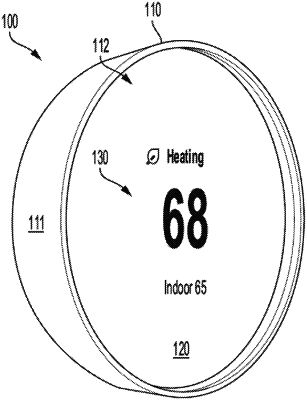| CPC G05D 23/32 (2013.01) [G01K 1/20 (2013.01); G05D 23/1917 (2013.01)] | 20 Claims |

|
1. A smart-home device comprising:
a temperature sensor;
one or more energy-consuming subsystems;
one or more processors programmed to perform operations comprising:
receiving a temperature measurement from the temperature sensor for an ambient environment surrounding the temperature sensor;
receiving one or more inputs from the one or more energy-consuming subsystems representative of a measured amount of electrical power being consumed by the one or more energy-consuming subsystems, wherein the one or more inputs comprises a measurement of an output of a voltage regulator representing an internal main power rail of the smart-home device, and the measurement is indicative of an overall power sourced from a power supply of the smart-home device and consumed by the smart-home device as a whole;
providing the one or more inputs from the one or more energy-consuming subsystems to a model that is trained to calculate an effect of power-consuming activity of the one or more energy-consuming subsystems on the temperature measurement from the temperature sensor, wherein the model comprises a thermal model of the smart-home device that models how heat from the one or more energy consuming subsystems affects the smart-home device; and
calculating an estimate of the temperature of the ambient environment by compensating the temperature measurement from the temperature sensor using the effect of the power-consuming activity of the one or more energy-consuming subsystems.
|